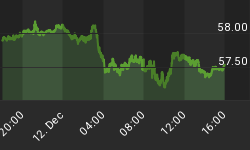
One of the great paradoxes of the post millennium financial construct is the higher the equity markets extend themselves, the greater their vulnerability to monetary and fiscal interference. Like a world class sprinter that eventually succumbs to performance enhancing drugs in the twilight of their career - the athlete becomes exposed by his maturing body and tenacity to maintain peak performance. In other words - his ego and vanity.
Today, the system's achilles heel flexes and extends from Washington. Not as much in the power or lack there of in regulation and governance, but in the capacity to simply deliver, well - the juice. I realize this isn't groundbreaking market insight and obvious enough that the greater public (i.e. through the likes of Rolling Stone or HBO) is aware for the first time in a generation that there actually is a man behind the curtain pulling the strings - or in this case injecting the hind quarters in broad daylight.
There lies the eventual catch-22 and the exposed tendon to missteps.
Eventually, this sprinter too will break down and its trainers, however willing, will be provided no additional monetary and fiscal balm to rejuvenate the patient. A derivative class of the contentious and idealogical mix of personalities now funneling through Congress over the last decade will likely fail spectacularly in addressing the next crisis. If anything, the events of the past few weeks illustrate how truly dysfunctional the political system has become over the past decade for something as routine as an act performed 53 times since President Nixon took office in 1969.
Nothing is more frustrating to this speculator than actually seeing a glimpse of both parties come to the table in a compromising fiscal fashion to only be followed by the extreme fringes (on both sides mind you) pulling them apart. But hey, the week is still young and we all know the famous Winston Churchill quote that I will spare you the insult in intelligence with repeating.
So, could the debt-ceiling impasse that threatens the full faith and credit of dear old Uncle Sam provide the fatal misstep in the markets canter (pun intended)?
Not likely - unless I have seriously underestimated the willingness of politicians to sacrifice their own idealistic intentions and careers upon the alter of righteous indignation. A novel thought indeed in a academic or political backroom, but one that rarely sees the light of day in the arena of public opinion where self preservation becomes Congress's version of Semper Fi.
The bottom line aside from the debt debate is I believe the equity markets - despite the breakouts in bellwethers such as Apple will continue to be trapped in the trading range that they have been in for the better part of the year. And while a debt ceiling compromise of some kind is very likely in the near term - I believe a tradable low for the year is still several weeks away and likely lower than the one carved in early June. The year long consolidation will eventually be broken - and most likely in the fall with a strong forth quarter rally.
Until then it pays to be patient and pragmatic with opportunities in the near term more likely on the short side of equities than long. This forecast continues to follow my Congruent Market Theory laid out on April 1st and draws correlations from the weekly equity only put/call ratio and the price structure of the market over the past year.


A closing high above the late April top on a weekly basis would likely pivot my trading posture from opportunistic on the short side to quite bullish. Considering we are currently trading towards the top of that range, it provides a tight stop with ample potential on the short side of equities.
I just joined Twitter. All my trades and occasional market musings are disclosed in real-time here.
















